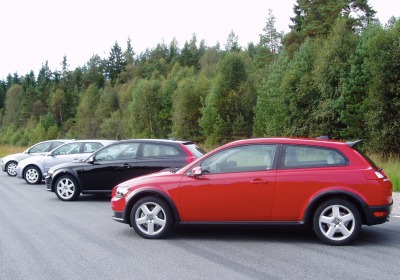Volvo celebrates SCC's 10th anniversary
Fri, 22 Jul 2011Volvo is celebrating the legacy of its Safety Concept Car 10 years after its release.
The Volvo SCC, first unveiled at the 2001 Detroit auto show, contained around 15 of the advanced technical solutions still found in Volvo models today. The SCC also inspired the design of the successful Volvo C30 model, which debuted in Paris in 2006.
"Concept vehicles are usually design or technology studies that give car buyers a taste of the future," says Volvo Car Corporation's president and CEO Stefan Jacoby. "The Volvo SCC, however, has added impact because it was both attractive and high-tech. It is an early example of how we design our cars around our customers' wishes, needs and limitations."
When designing the SCC, the Swedish manufacturers sought to prove that it was possible to combine safety and a sleek style within a relatively small car.
Project manager Östen Strandberg says: "When we began work on the concept car at the end of the 1990s, Volvo was still primarily known for making family cars designed to protect their occupants in a collision. The SCC signalled the start of a new approach which enhanced safety for the occupants, where the car's most important safety task is to help avoid dangerous situations and accidents in the first place. With the driveable Safety Concept Car, we showed that all these smart, collision-preventive technological solutions were within reach."
One year after its release, work began on translating the technical studies illustrated in the SCC into production-ready safety technology, and then in 2003 Volvo began work on what would be premiered as the Volvo C30.
One example of the SCC's safety technology still found in Volvo vehicles today is the forward collision warning, now in its third generation with Pedestrian Detection, Collision Warning and Full Auto Brake.
Technology monitoring vehicles in the 'blind spot', now named Blind Spot Information System (BLIS), and a warning system that alerts the driver if they stray from the lane – the Lane Departure Warning and Driver Alert – are also present in today's models.
The Adaptive Cruise Control (ACC) also remains, which maintains a set distance between the vehicle in front, operating down to standstill in cars with automatic transmission.
Emergency Brake Lights that flash during hard braking were first found on the SCC, along with safety cameras, which are now integrated reversing and grille-mounted cameras, although they are optional.
Active Bending Lights that follow the curvature of the road as the vehicle turns were first unveiled on the SCC, with a developed Human machine Interface (HMI), now named Volvo Sensus.
The height-adjustable rear seat appears in today's models as the integrated two-stage child booster cushions.
Today's Keyless Go system and communication with the car via mobile phone were also born in the SCC, most recently with a mobile application introduced in spring 2011.
Not all of the SCC's features made it into production, however. The transparent A-pillars, originally part of the C30 project, were eventually replaced because of strength, build complexity and cost issues.
By Rufus Thompson



